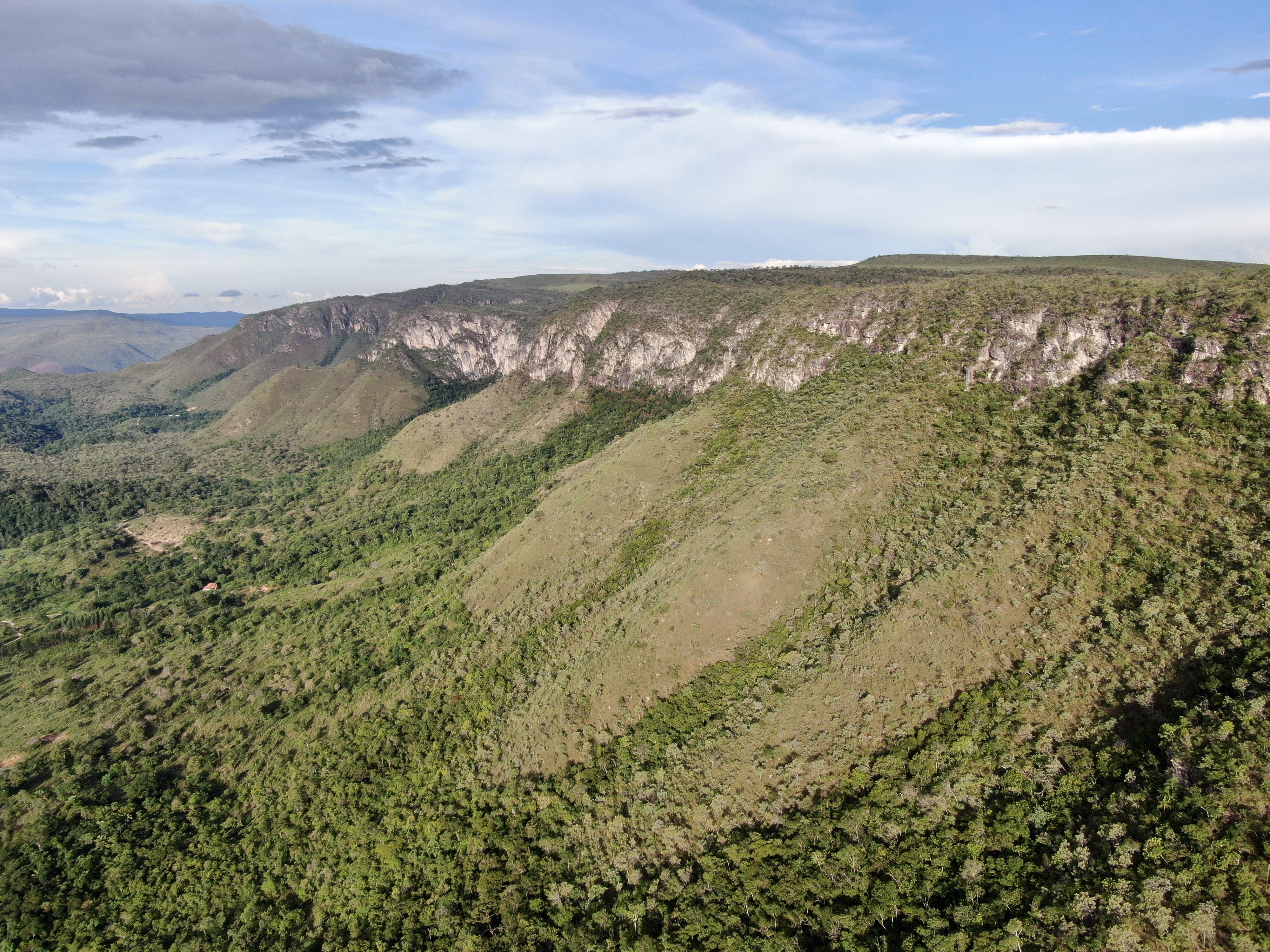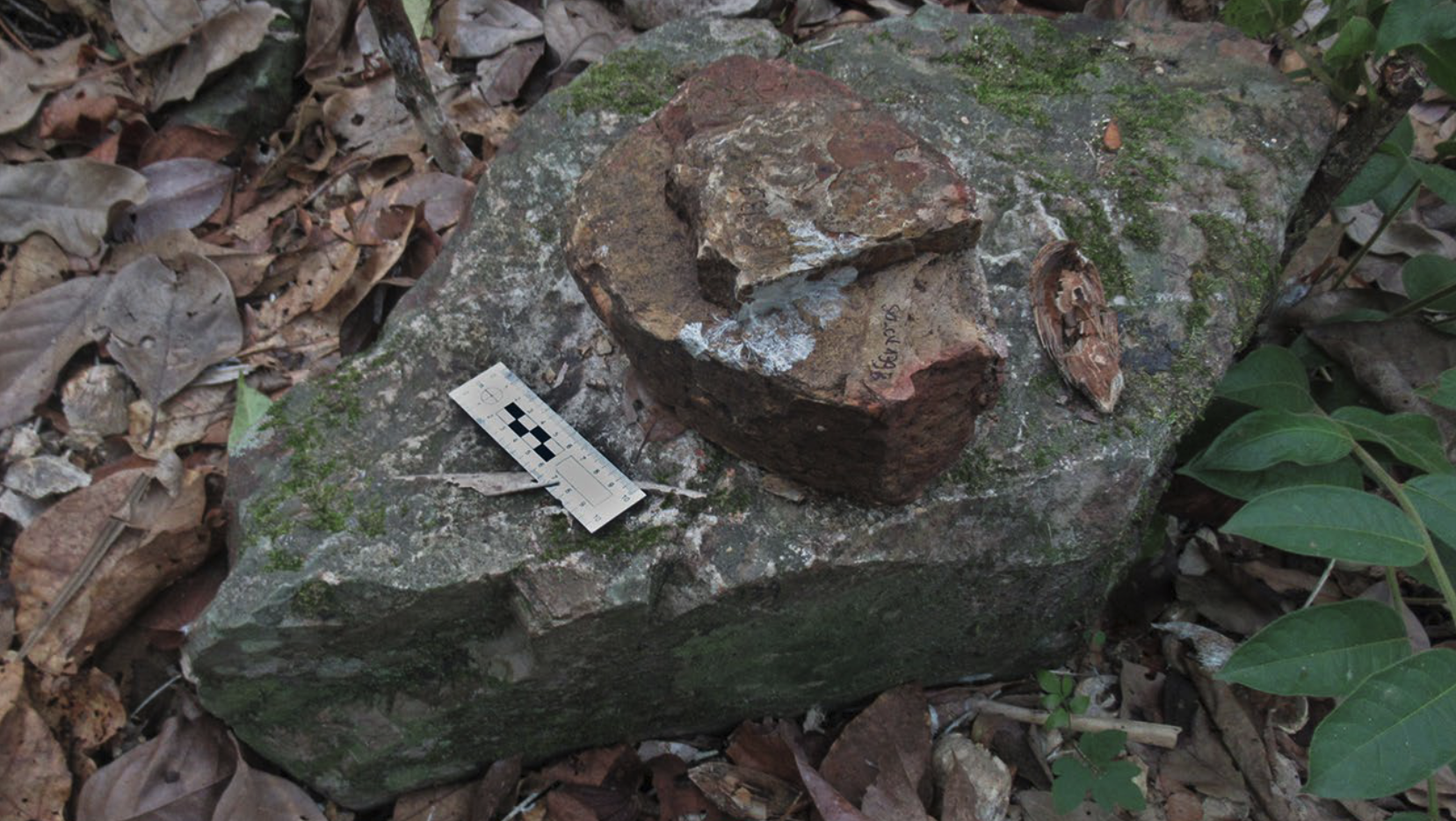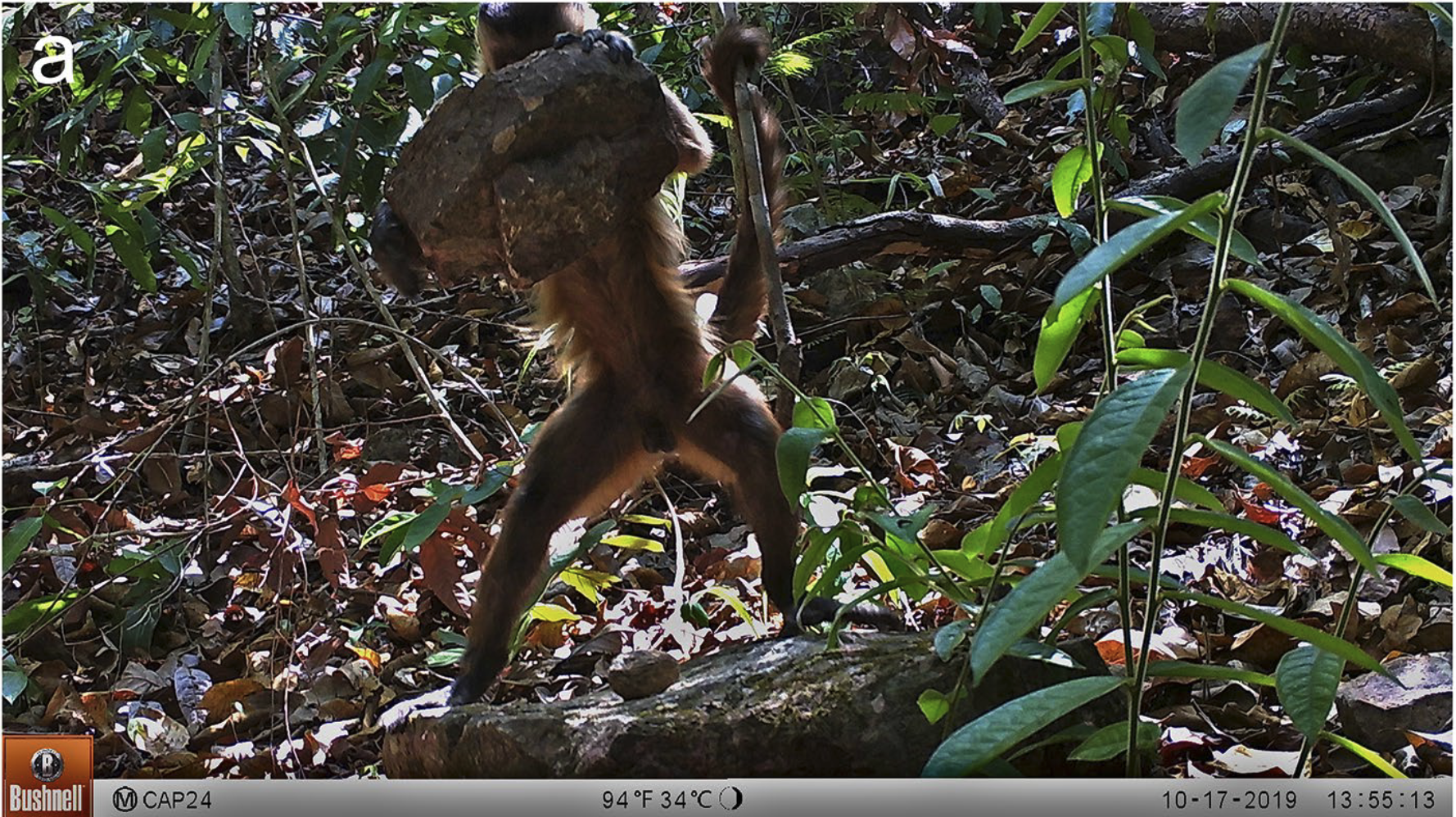
The Chapada dos Veadeiros National Park, created in 1961, protects an area of approximately 240,611 hectares and is located in the Cerrado biome, in the state of Goiás, Brazil. In this park, we find several plant formations, hundreds of springs and watercourses, as well as rocks that are more than a billion years old. Its landscapes are of rare beauty, with features that change throughout the year.
The Park also preserves areas of old mining sites, forming part of local history. It was declared a World Natural Heritage Site in 2001 by UNESCO. In addition to the conservation of biodiversity and geodiversity, the park’s objectives are scientific research, environmental education, and public visitation. Hiking and waterfall bathing are the main activities in the Park, allowing visitors to explore the immense landscapes of Chapada on a journey through the Brazilian Cerrado along ancient routes used by miners. The park’s fauna is diverse and is home to a wealth of species adapted to the Cerrado, one of the most biodiverse biomes in the world. The primates that inhabit the region are capuchin monkeys (Sapajus libidinosus), black-tufted marmosets (Callithrix penicillata), and howler monkeys (Alouatta caraya).

As part of the Capcult project, Neoprego researchers mapped nut-cracking sites in various park regions in 2019. Finally, they found a location in the recently expanded park area with groups frequently using stone tools. This area on the park’s edge belongs to the Mariri Jungle Lodge and Mariri Wildlife Sanctuary, which have aligned interests with Neoprego and provide logistical support for our research.

In the following years, camera-trap monitoring was carried out at the cracking sites in the Mariri area, where we monitored the use of stone tools over a long time to understand the differences across populations in the nut-cracking. Additionally, field experiments to determine whether monkeys use other types of tools were also carried out here by the Neoprego team.

O Parque Nacional da Chapada dos Veadeiros, criado em 1961, protege uma área aproximada de 240.611 hectares e está inserido no bioma Cerrado, no estado de Goiás, Brasil. Nesse parque, encontramos diversas formações vegetais, centenas de nascentes e cursos d’água, além de rochas com mais de um bilhão de anos.
Suas paisagens são de rara beleza, com feições que se alteram ao longo do ano. O Parque também preserva áreas de antigos garimpos, fazendo parte da história local. Foi declarado Patrimônio Mundial Natural em 2001 pela UNESCO. Além da conservação da biodiversidade e geodiversidade, o parque tem como objetivos a pesquisa científica, a educação ambiental e a visitação pública. As caminhadas e banhos de cachoeira são as principais atividades no Parque, permitindo aos visitantes explorar as imensas paisagens da Chapada em uma viagem pelo Cerrado brasileiro em antigas rotas usadas por garimpeiros
A fauna do parque é diversificada e abriga uma riqueza de espécies adaptadas ao Cerrado, um dos biomas mais biodiversos do mundo. Os primatas que habitam a região são os macacos-prego (Sapajus libidinosus), sagui-de-tufos-pretos (Callithrix penicillata), e bugios (Alouatta caraya).

No âmbito do projeto Capcult os pesquisadores da Neoprego realizaram um mapeamento de sítios de quebra de cocos em várias regiões do parque em 2019. Por fim, encontraram um local na área recém expandida do parque com grupos que usam com frequencia ferramentas de pedra. Essa área na borda do parque pertence ao Mariri Jungle Lodge e Santuário Silvestre Mariri, que tem interesses alinhados com a Neoprego e dão apoio logístico para nossas pesquisas.
Nos anos seguintes foram feitos acompanhamentos com armadilhas fotográficas nos sítios de quebra da área do Mariri, onde acompanhamos o uso das ferramentas por longo prazo para entendermos as diferenças entre populações na quebra de cocos.
Além disso, experimentos de campo para determinar se os macacos usam outros tipos de ferramentas também foram realizados aqui pela equipe Neoprego.
REFERENCES:
- https://www.icmbio.gov.br/parnachapadadosveadeiros/
- Falótico, T., Valença, T., Verderane, M. P., & Fogaça, M. D. (2022). Stone tools differences across three capuchin monkey populations: food’s physical properties, ecology, and culture. Scientific Reports, 12(1), 14365. https://doi.org/10.1038/s41598-022-18661-3

